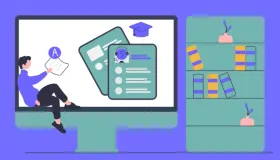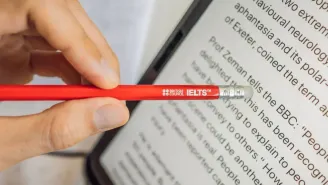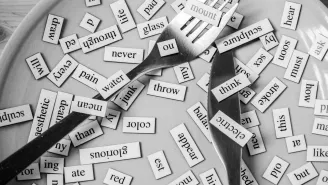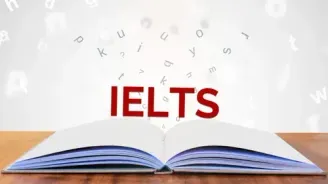The Value Of A College Degree Reading Answers Passage
The Value Of A College Degree Reading Answers Passage
Paragraph A. The escalating cost of higher education is causing many to question the value of continuing education beyond high school. Many wonder whether the high cost of tuition, the opportunity cost of choosing college over full-time employment, and the accumulation of thousands of dollars of debt is, in the long run, worth the investment.
Paragraph B. The risk is especially large for low-income families who have a difficult time making ends meet without the additional burden of college tuition and fees.
Paragraph C. In order to determine whether higher education is worth the investment, it is useful to examine what is known about the value of higher education and the rates of return on investment to both the individual and to society.
~THE ECONOMIC VALUE OF HIGHER EDUCATION
Paragraph D. There is considerable support for the notion that the rate of return on investment in higher education is high enough to warrant the financial burden associated with pursuing a college degree. Though the earnings differential between college and high school graduates varies over time, college graduates, on average, earn more than high school graduates. According to the Census Bureau, over an adult's working life, high school graduates earn an average of $1.2 million; associate’s degree holders earn about $1.6 million; and bachelor’s degree holders earn about $2.1 million (Day and Newburger, 2002).
Paragraph E. These sizeable differences in lifetime earnings put the costs of college study in a realistic perspective. Most students today—about 80 percent of all students—enrol either in public four-year colleges or in public two-year colleges, according to the U.S. Department of Education report. Think College Early, a full-time student at a public four-year college, pays an average of $8,655 for in-state tuition, room, and board (U.S. Department of Education, 2002). A full-time student in a public two-year college pays an average of $1,359 per year in tuition (U.S. Department of Education, 2002).
Paragraph F. These statistics support the contention that, though the cost of higher education is significant, given the earnings disparity that exists between those who earn a bachelor's degree and those who do not, the individual rate of return on investment in higher education is sufficiently high to warrant the cost.
~OTHER BENEFIT! OF HIGHER EDUCATION
Paragraph G. College graduates also enjoy benefits beyond increased income. A1998 report published by the Institute for Higher Education Policy reviews the individual benefits that college graduates enjoy, including higher levels of saving, increased personal/professional mobility, improved quality of life for their offspring, better consumer decision-making, and more hobbies and leisure activities (Institute for Higher Education Policy, 1998). According to a report published by the Carnegie Foundation, nonmonetary individual benefits of higher education include the tendency for postsecondary students to become more open-minded, more cultured, more rational, more consistent, and less authoritarian; these benefits are also passed along to succeeding generations (Rowley and Hurtado, 2002). Additionally, college attendance has been shown to "decrease prejudice, enhance knowledge of world affairs and enhance social status" while increasing economic and job security for those who earn bachelor’s degrees (Ibid.). Research has also consistently shown a positive correlation between completion of higher education and good health, not only for oneself, but also for one’s children. In fact, "parental schooling levels (after controlling for differences in earnings) are positively correlated with the health status of their children", and Increased schooling (and higher relative income) are correlated with lower mortality rates for given age brackets" (Cohn and Geske, 1992).
~THE SOCIAL VALUE OF HIGHER EDUCATION
Paragraph H. A number of studies have shown a high correlation between higher education and, cultural and family values, and economic growth. According to Elchanan Cohn and Terry Geske (1992), there is the tendency for more highly educated women to spend more time with their children; these women tend to use this time to better prepare their children for the future. Cohn and Geske (1992) report that "college graduates appear to have a more optimistic view of their past and future personal progress."
Paragraph I. Public benefits of attending college include increased tax revenues, greater workplace productivity, increased consumption, increased workforce flexibility, and decreased reliance on government financial support (Institute for Higher Education Policy, 1998)....
CONCLUSION
Paragraph J. While it is clear that investment in a college degree, especially for those students in the lowest income brackets, is a financial burden, the long-term benefits to individuals, as well as to society at large, appear to far outweigh the costs.
Let’s explore the questions and answers of The Value Of A College Degree Reading passage.
Also Read: IELTS Reading Tips & Tricks 2024: Techniques for Band 9
The Value Of A College Degree Reading Answers with Sample Questions
Have you read the passage? Now, take the test and find the The Value Of A College Degree Reading answers! Try to answer these questions by yourself before you sneak a peek at the answers given below.
Check Out Top 15+ IELTS Reading Practice Test Questions with Answers
Below are some top free IELTS Reading Practice test online questions with detailed answers to enhance your IELTS preparation online. We have provided sample passages for each test type for your reference.
- What Is Exploration Reading Answers
- Effects Of Noise Reading Answers
- The Discovery Of Baby Mammoth Reading Answers
- The Dead Sea Scrolls Reading Answers
- The Ring-Tailed Lemur Reading Answers
- Why We Need To Protect Polar Bears Reading Answers
- Nutmeg A Valuable Spice Reading Answers
- What Is Meaning Reading Answers
- Cutty Sark Reading Answers
- The Step Pyramid Of Djoser Reading Answers
- South Pole Adventurer Reading Answers
- The Future Of Work Reading Answers
- Ambergris Reading Answers
- Trees In Trouble Reading Answers
- Could Urban Engineers Learn From Dance Reading Answers
- The Flavour Of Pleasure Reading Answers







